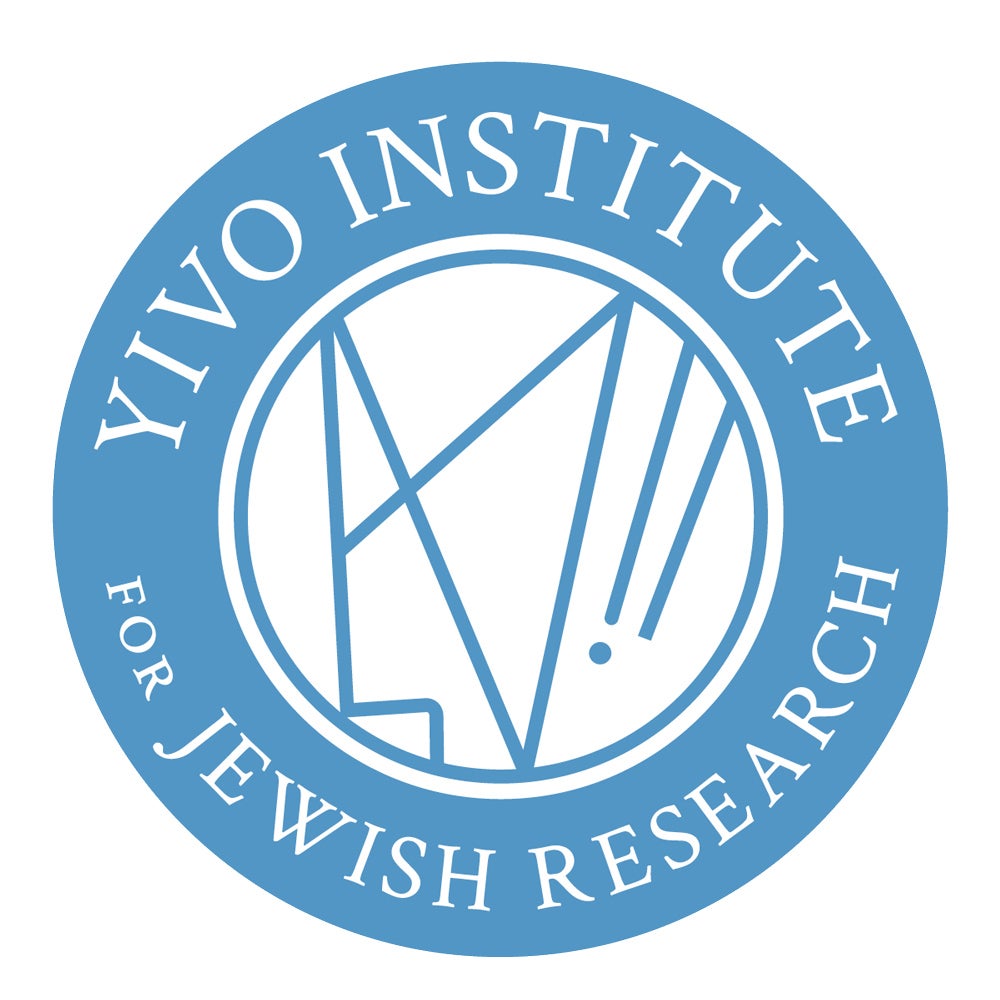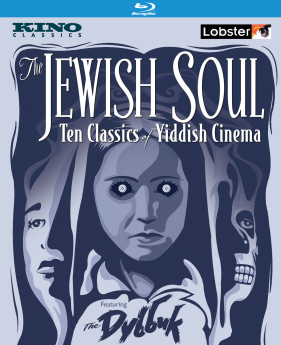The Yiddish Alef-beys
The Yiddish language is written using the Hebrew alphabet, or the alef-beys. If you are unfamiliar with the alef-beys, your first step should be to become familiar with the letters. Use the resources below to learn the Yiddish alef-beys and get started reading and writing in Yiddish.
-
An Alef-beys Chart
 This comprehensive chart from the Yiddish Book Center includes the letter in both print and cursive, as well as the name and pronunciation of each letter. A printable PDF is available to keep with your Yiddish language notes.
This comprehensive chart from the Yiddish Book Center includes the letter in both print and cursive, as well as the name and pronunciation of each letter. A printable PDF is available to keep with your Yiddish language notes. -
Alef Beys - Yiddish Alphabet
 This scan of a children's book from 1990 is intended to teach children the Yiddish alef-beys. Each page contains a letter, a word that starts with that letter, and an illustration of that word. The site is old but the pages make for great flashcards.
This scan of a children's book from 1990 is intended to teach children the Yiddish alef-beys. Each page contains a letter, a word that starts with that letter, and an illustration of that word. The site is old but the pages make for great flashcards. -
Yiddish Alef-Beys (Alphabet)
 This alef-beys guide from YIVO is especially helpful in that it includes the standard romanization for Yiddish letters. You can click on the letter names to hear how they should be pronounced.
This alef-beys guide from YIVO is especially helpful in that it includes the standard romanization for Yiddish letters. You can click on the letter names to hear how they should be pronounced.
The Sounds of Yiddish
The Yiddish language uses some sounds that are not commonly used in English, so you'll want to get accustomed to the way the language sounds. Explore the sounds of Yiddish through these music, film, and spoken word resources.
It should be noted that Yiddish dialects are varied by region and so pronunciation will vary between resources as well. Vowel sounds will differ between dialects. There is no standard pronunciation, so don't be surprised if the same word sounds different depending on what source you use.
"Chasene Tantz" (Wedding Dance) by Seymour Rechtzeit
One of the most recognizable parts of Yiddish culture is the musical style of klezmer. This is a fun klezmer song with enunciated lyrics that may be able to pick out and look up in a dictionary.
Chasene tantz. (n.d.). [MP3]. Retrieved 2024, from https://archive.org/details/lp_sing-and-dance-some-freilachs-with-seymour_seymour-rechtzeit-abe-ellsteins-orchestra.
"Yiddish" by Molly Picon
Molly Picon was one of the biggest stars in Yiddish theater and even starred in Yiddish films. This song is a fun introduction to her singing that gives a good idea of what Yiddish songs were popular on the stage.
Yiddish. (n.d.). [CD]. Retrieved 2024, from https://archive.org/details/lp_molly-picon-at-the-yiddish-theatre-vol-1_molly-picon.
"Ich Ken Es Nisht" (I Don't Know It) by Pinie Goldstein and Anna Rappel
This song includes a lot of spoken word which may be easier to understand than the singing included previously. The song also has great examples of the sounds common in Yiddish but not so common in English.
The Dybbuk is a classic of Yiddish cinema based on an old Jewish folktale. This resource is helpful in getting the feel of what conversations in Yiddish would sound like thanks to the dialogue between characters. Through Internet Archive, access this film to watch in Yiddish with English subtitles.
Waszynski, M. (Director). (1937). Der Dibuk [The Dybbuk] [Film]. Internet Archive.
-
The Jewish Soul: Classics of Yiddish Cinema (Blu-ray)
 This collection of ten Yiddish films with English subtitles is great for new learners to get more familiar with the sounds of Yiddish. You will need a Blu-Ray player if you purchase a physical copy of the collection. If you plan on teaching a class and want to screen the films, you can purchase the rights to show them. The Dybbuk is also included in this collection.
This collection of ten Yiddish films with English subtitles is great for new learners to get more familiar with the sounds of Yiddish. You will need a Blu-Ray player if you purchase a physical copy of the collection. If you plan on teaching a class and want to screen the films, you can purchase the rights to show them. The Dybbuk is also included in this collection.
Proste Yiddish -- Yiddish for Learners Podcast
This podcast is essential for new Yiddish learners as it is intended specifically for those who are just starting out. The vocabulary used is quite simple and the speaker makes sure to speak slowly and clearly. You can listen on any podcast provider, but through the YouTube link here the transcript is displayed visually so you can read along as you listen.
Diamond, E. (Host). (2023, May 29). Learn Yiddish with Proste Yiddish פּראָסטע ייִדיש : Ver Bin Ikh? // May (No. 1) [Audio podcast episode].
Multimedia Resources
-
Pronunciator
 Pronunciator is a language learning database that can be accessed online. There are courses you can follow as well as vocabulary flashcards. Learners may be able to access Pronunciator using their public library card -- check with your local library to see if you can create a free account!
Pronunciator is a language learning database that can be accessed online. There are courses you can follow as well as vocabulary flashcards. Learners may be able to access Pronunciator using their public library card -- check with your local library to see if you can create a free account! -
YiddishPOPYiddishPOP is a fun resource to learn Yiddish through interactive videos. No English is spoken throughout the course, so it is very immersive. This is fun for kids but also challenging enough for adult learners. If you enjoyed BrainPOP then you'll love YiddishPOP.


